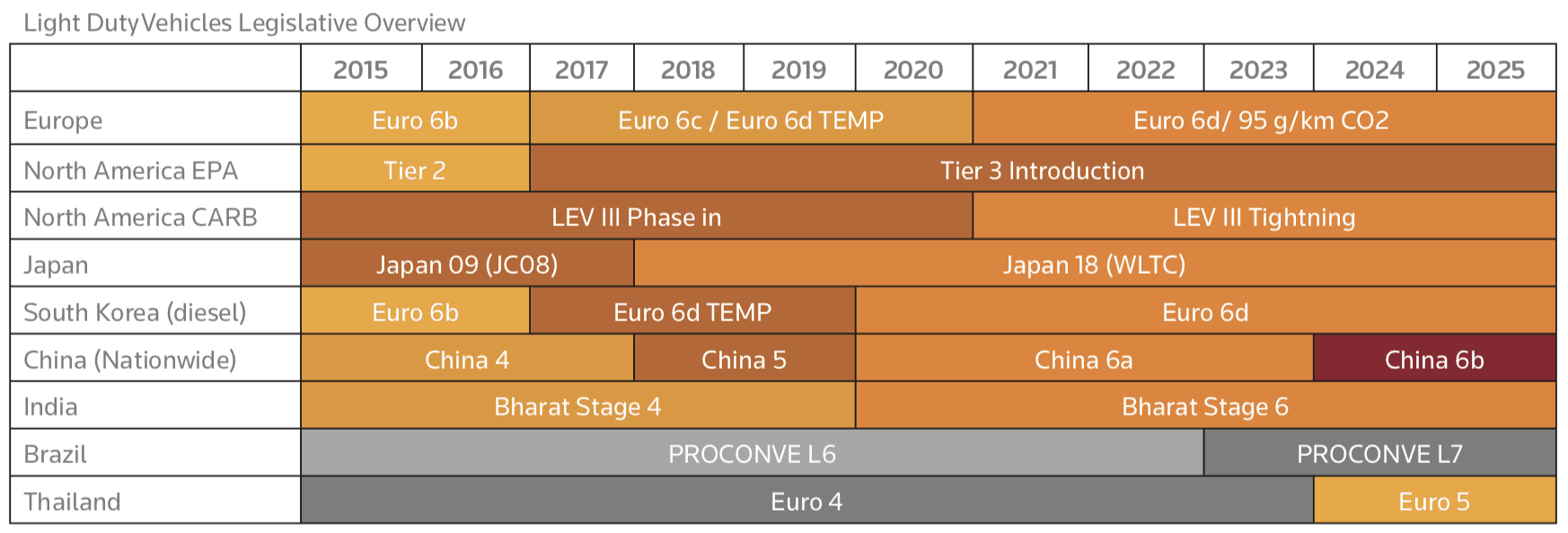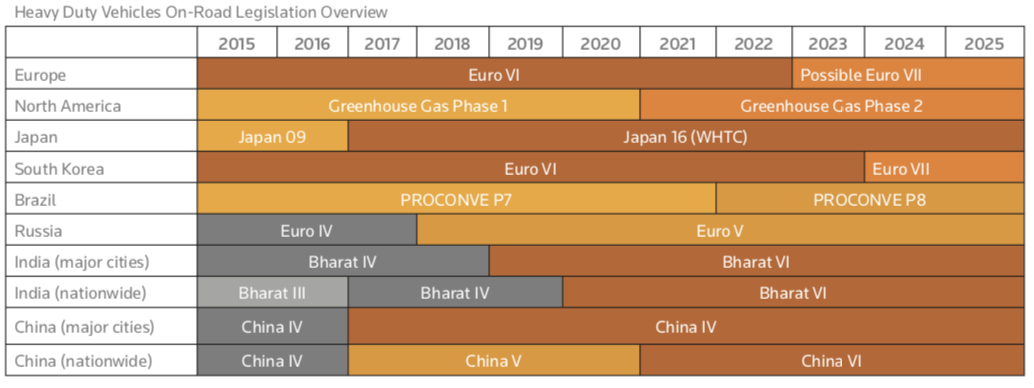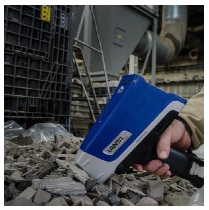VEHICLES REGULATIONS OVERVIEW
POSTED BY ALICE
Today at Eco Cat News, we will take a particular look at the upcoming and actual regulations concerning vehicles.
Why making car regulations?
Governments that are concerned with the environment recognize that vehicles are major contributors to global warming and climate change, and attempt to limit this negative impact through enforced regulations. Manufacturers run the risk of very hefty penalties if they ignore or seek to manipulate these regulations and are thus encouraged to prioritize efficiency over performance. As environmental concerns become increasingly highlighted, so vehicle regulations become more stringent and more widespread.
Currently, there are 4 major regulators:
- Europe
- USA - led by the state of California which has, perhaps, the strictest regulations
- China
- Japan
Categorization of Vehicles
Light-Duty Vehicles
Any motor vehicle with a gross weight rating of 4,500 kg. or less is classified as “Light Duty”. This is, by far, the biggest category, in terms of annual production and demand, and consequently heavily impacted by regulations.
Many countries impose regulations by following European standards, though the timing may vary. South Korea, for example, follows exactly the European emission regulations norms, whereas in Thailand and Russia there is usually a delay in implementation.
Heavy-Duty Vehicles on-road/off-road
Heavy-duty vehicles, designated as vehicles above 4,500 kg., are vehicles designed for heavy work - buses and trucks for example. However, HDV’s designed for off-road usage (e.g. tractors) are subject to a different set of regulations.
Heavy-duty vehicle emissions are typically more harmful to the environment than those of light-duty vehicles, and consequently are subject to more stringent regulations.

Globally, off-road heavy-duty vehicles are subject to "Tier" regulations and are regulated by American standards.
Second-hand Vehicles
Non-regulated countries that import used vehicles, rather than rely upon home production, will usually source from a predominantly regulated country. For example, West African countries import primarily from Europe, whereas countries in East Africa will source from both Europe and the USA. Thus, used catalytic converters from this part of the world may vary greatly from vehicle to vehicle, depending on its country of manufacture.
Future Regulations
In September 2018, Europe has mandated the use of Gasoline Particulate Filter (GPF) that treat and limit hazardous emissions from Gasoline Direct Injection (GDI) engines. These usually do not use precious metals in their construction and therefore their recycle value is minimal. However, producing them has significant high-cost implications, and consequently, automotive companies attempt to collect GPFs from the end of life vehicles and re-use them on brand new cars - often up to three times in their life span.
Furthermore, the composition of particulate filters is quite different from catalytic converters. Catalysts have a ceramic base whereas particulate filters are made from silicon carbide. The main problem is that the fusion temperature of these two materials isn't the same, with silicon carbide needs a temperature above 1600°C whereas ceramics only needs 800°C. This means that to recycle used exhausts, a separate line is required in the process, thus adding more cost.
Summary
Change is the one certainty in life and this is particularly true in the catalytic converter recycling industry. Ongoing environmental pressure, new technology, and demand for dwindling sources of precious metals will all continue to impact on our market. No-one can be certain where this will lead us - all we can do is be aware of the change and make sure we are first to react!



























